eQMS Buyer’s Guide: Making the Business Case for a New QMS Solution
You know you need a new QMS solution. You may even have your sights set on an eQMS that you’ve evaluated and believe is the best option for your organization.
But there’s a catch: you can’t just swipe the company card and add a new eQMS to your tech stack. This is a significant financial investment for the business.
Instead, you’ve got to convince the executives who hold the power of the purse strings to authorize the purchase of a new QMS solution. And to do that, you’ll need to build a strong business case—something you can present to show you’ve done your due diligence, have a plan for making the transition from your old QMS to a new one, and can clearly show the ROI of the investment.
This process can feel daunting if you’ve never done it before—and even if you have—which is why we’ve created this guide. We’ll walk you through the process of building the business case for your new QMS solution, pitching it to management, and making the transition from your old QMS to one that will help your MedTech business thrive.
Like any big project, you just have to take it step by step.
Table of Contents
 1. Start by learning about your internal purchasing process
1. Start by learning about your internal purchasing process
Your company probably has an internal process for a large purchase like an eQMS. In midsize-to-large MedTech companies, you’ll likely be able to find this process in the finance department, or perhaps in a dedicated purchasing department that operates under finance’s umbrella.
At this stage, you’re laying the groundwork for your business case, answering questions like:
-
What is your policy on vendor evaluation? How many quotes are you required to get?
-
What is the current budget for your QMS? Will that need to increase for this purchase?
-
Where in the current budget cycle are you? Has a budget already been approved for the coming year? Timing can play a large role in getting approval for a new QMS.
-
What documents will I need to create as I begin building this business case?
-
Whose final approval will I need for this purchase? Is it a department head? Finance? Will there be several people who need to sign off on this?
Write out the answers to these questions and anything else you learn about your company’s purchasing process and keep that document handy as you work through this process.
In a smaller organization, there may be no established purchasing process, but you’ll still benefit from asking these questions as you build your business case for this purchase.
![document-organization-needs-eqms-guide]() 2. Document your organization’s needs
2. Document your organization’s needs
You clearly know why you need a new QMS solution, but that doesn’t mean your department leader, CFO, or CEO does.
One of the essential parts of any business case is defining your organization’s needs and clearly articulating the goals and objectives of your proposed solution.
This will be at the heart of your business case, and it should answer questions like:
-
What are the challenges you face with your current QMS? How are these challenges affecting the business? (E.g. wasting team members’ time on menial work)
-
How is the organization operating with the current solution, and how would a new QMS solution change operations for the better? What are the benefits of switching?
-
How are you going to measure success? What metrics will you measure? What OKRs (objectives and key results) will you be tracking?
If you have supporting data related to costs, document that here. Your main goal here should be to prove why your organization needs a new eQMS.
You’ll also want to show your department leadership and executive team that a new eQMS will provide measurable value to the company and there will be a clear return on the investment in the software. You can frame this in a number of ways. For example:
-
Fewer resources will be required to manage the new QMS, thus saving the company money—especially on expensive external support.
-
The new eQMS will increase the speed at which you get high-quality products to market, generating more revenue for the company.
-
It will also reduce risk related to non-compliance, which could be a high cost to your business. An FDA warning letter may require years to resolve, eating up precious resources.
You can see how the examples above will potentially save the company money or generate more revenue. So you can tell your executives that the investment in an eQMS will pay for itself over time.
Creating this document should also help clarify the specific requirements you need from an eQMS, which will be invaluable during the vendor evaluation process.
![identify-stakeholders-sponsors--eqms-guide]() 3. Identify internal stakeholders and sponsors
3. Identify internal stakeholders and sponsors
This step should really begin as soon as you decide you’re going to build the case for a new eQMS. Even if you’re spearheading the process, you need everyone who has a stake in this process to be involved.
Make a list of the key people who will need to be kept abreast of what’s happening or will be actively involved in carrying out this process.
There are a number of ways to structure a list of personnel, but a tool like a RACI chart (Responsible, Accountable, Consulted, Informed) may be useful to help you keep track of everyone and ensure you’re communicating well throughout the process.
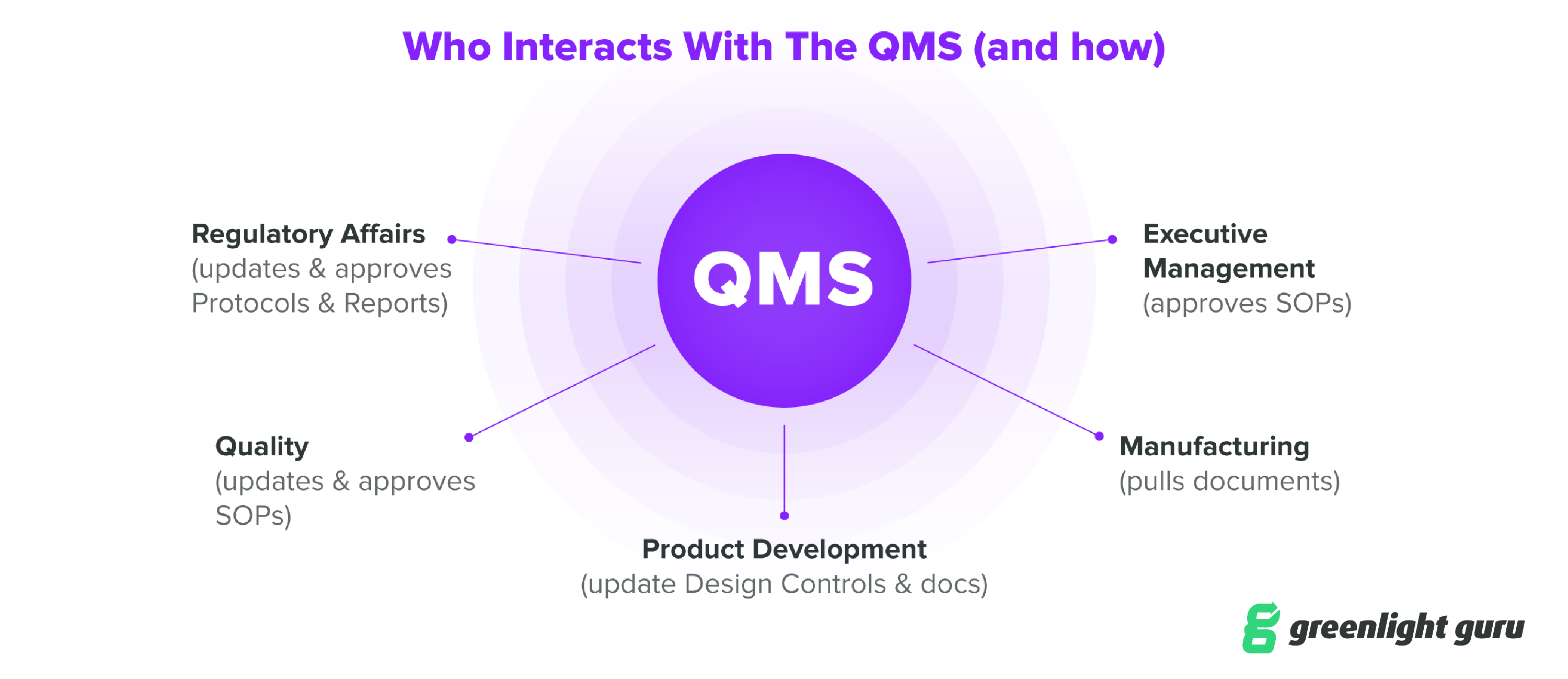
Your situation may be unique, but for most MedTech companies, you’ll need to consider:
-
Product Development uses the QMS for updating design controls and documents.
-
Quality uses the QMS for updating and approving SOPs.
-
Regulatory Affairs update and approve protocols and reports within your QMS.
-
Manufacturing uses your QMS to pull documents like the DHF.
-
Executive management uses the QMS to approve SOPs.
-
Your VP of Quality will likely be your executive sponsor throughout this process, and you should keep them updated on any developments.
And once you’ve identified these stakeholders, be sure to get their opinions on the current QMS and what they’d like to see in a new one. You may get some invaluable information on the team’s needs or hear a powerful anecdote that you can use when you’re presenting your business case to your exec team.
![evaluate-vendors-eqms-guide]() 4. Evaluate vendors and build the case for the solution you want
4. Evaluate vendors and build the case for the solution you want
There’s a good chance your company will require you to formally evaluate multiple vendors and get more than one quote. Even if you feel strongly about a particular eQMS solution, you’ll still need to go through a vendor evaluation process as you build your business case.
Think of this as less of an extra hoop to jump through and more of an opportunity to clearly distinguish a preferred solution from its competitors. Use the organizational challenges and opportunities that you previously documented to identify the solutions that will help you overcome those challenges and meet your objectives.
As you go through this process, a vendor evaluation checklist can be an excellent tool to keep track of the different options and quickly compare them. Here are fourteen key questions you should be asking every eQMS vendor:
-
Is this eQMS built specifically for medical device companies?
-
Is this solution aligned with major national and international medical device regulations and standards?
-
If not, how much customization is required? What is the cost and timeline for that customization?
-
Is the QMS software simple enough to implement quickly, but robust enough to meet the needs of larger companies?
-
Are there purpose-built capabilities for managing design controls and risk management fully integrated into the QMS?
-
Are there turn-key workflows for all aspects of the quality system available out-of-the-box?
-
Does this QMS ensure full traceability throughout the entire medical device lifecycle?
-
Can this eQMS help my team achieve a truly paperless audit?
-
Do you have medical device experts on your customer success team?
-
How quickly can this QMS solution be implemented?
-
How will this QMS help us stay proactive and ahead of regulatory changes?
-
Is ongoing software validation included at no additional cost?
-
Is this QMS solution built with a secure, modern architecture?
-
What is the total cost of ownership (TCO) and return on investment (ROI) we can expect?
As you go through this process, a vendor evaluation checklist can be an excellent tool to keep track of the different options and quickly compare them.
It’s also a good practice to speak with your industry peers who are using the different solutions to get their points of view. However, once you’ve found the vendor that meets your requirements and organizational needs, you need to be able to make the case for that specific QMS solution.
![determine-roi--eqms-guide]() 5. Determine the ROI for this investment
5. Determine the ROI for this investment
One of the best ways to bolster your business case is by focusing on ROI.
The returns on this investment will be particularly important to executives who are stewarding the financial well-being of this business. It can be tricky to pull out an exact ROI, as the benefits of a great eQMS accrue over time, but there are ways to calculate it.
For instance, an independent study by the research firm Hobson & Company found that Greenlight Guru’s eQMS solution resulted in:
-
50% reduction in time spent on development and design documentation
-
75% reduction in QA/RA time spent on mandatory training
-
50% reduction in time spent preparing for audits
-
40% reduction in the number of audit findings and a 25% reduction in the time it took to address those findings
In fact, G2 recently gave Greenlight Guru the “Best ROI” award among QMS software solutions.
You can take a look at the estimated ROI for Greenlight Guru’s eQMS by using our free Value Calculator (based on the same independent study). You can input your company’s specific information and the Value Calculator will estimate the potential ROI of implementing Greenlight Guru. This is the type of analysis you can share with your executive team while making the business case.
But every vendor you evaluate should be able to help you determine the ROI for their QMS solution for your company.
If you have a specific vendor that you believe is the best fit for your company, talk to their sales team. They should be able to work with you to build a custom business case for their solution that takes into account your company’s unique circumstances.
6. Establish your transition plan
There’s one final piece of the puzzle you’ll want to have in place before you present your business case: the transition plan.
Also referred to as a project plan, the transition plan is the summary of how you intend to get from A to B—meaning from your old QMS to the new one. It should answer questions like:
-
What are the steps involved in transitioning to the new QMS?
-
What kind of support will you get from the eQMS vendor on the implementation?
-
Who will need to be trained on the new software and how long will that take?
-
What are the risks involved in transitioning and what are you doing to mitigate them?
-
What is the estimated timeline for the transition, and how does it interact with key dates like audits or other business goals?
As you put together your transition plan, lean on your vendor's sales team and help them understand your timeline for implementation and any important dates or milestones you have coming up. For example:
-
What is your audit schedule? If you have an audit next month, you may not have time to purchase this solution and fully transition to the new QMS. However, some vendors, like Greenlight Guru, can offer a phased implementation that’s tailored to your unique needs.
-
Do you have funding-related milestones you need to hit in the next year or two? Again, communicate these milestones to your vendor, as this will play into the custom implementation plan they should put together for you.
7. Create your business case and present it
At this point, you’ve likely accumulated a mountain of documentation for this purchase. But to effectively present your business case to an executive team, you’ll need to be concise and clear.
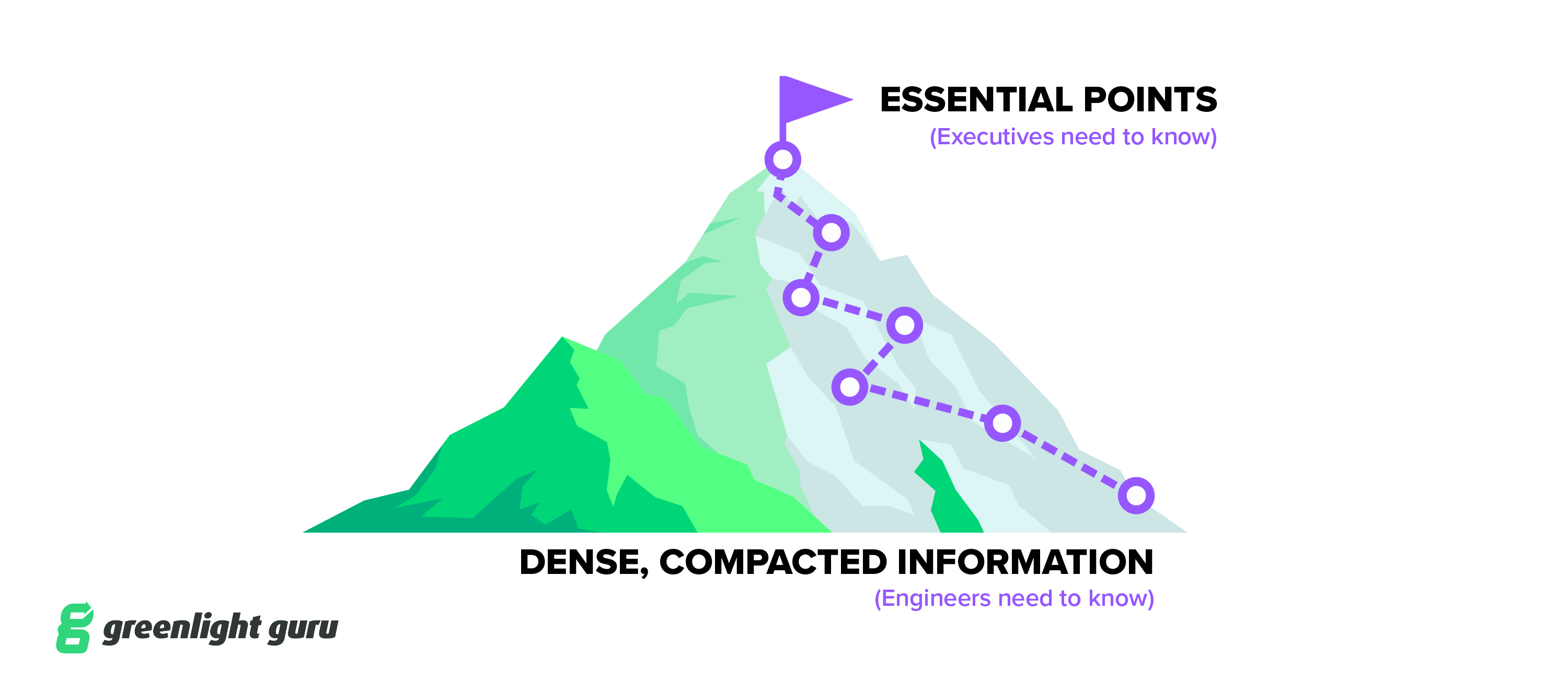
Typically, engineers like to talk about the details, the base of the mountain of information, we can call it. But what your executives need to hear is the most important information—the peak of the mountain—what everything is building up to.
You don’t want to lead with the intricacies of the design control module. You want to lead with the most important points of the business:
-
State the problem: Show why the current process does not work and illustrate the key challenges with the current QMS.
-
Present the solution: Describe the specific benefits the new eQMS will provide to the company (ex. improve speed, efficiency, compliance, and reduce risk, etc.)
-
Vendor selection: Show how you evaluated the vendors and made the selection.
-
Investment required: Outline the total cost of the solution
-
ROI on the investment: Share the detailed ROI calculation
Turn that into an executive summary and a powerpoint that you can present, and be prepared to go into details if you’re asked questions about the solution. But if you’ve gone through the purchasing process step-by-step and done your due diligence ahead of time, you may just find that getting a “yes” isn’t as difficult as you imagined.
Final thoughts![final-thoughts-eqms-guide]()
Purchasing a new eQMS is a big undertaking, but the work doesn’t end once you have executive sign-off on the project. Implementing your new eQMS solution is the next step, and it can be a challenging one.
That’s why it’s important to work with a partner that’s willing and able to build out a custom implementation plan and work with you as you get your new eQMS up and running.
At Greenlight Guru, our onboarding and implementation team provides a world-class implementation experience that will take into account your organization’s unique needs and goals.
In fact, Greenlight Guru was named the leading QMS in G2’s Grid Report for the 18th consecutive quarter. But we also took the top spot when it comes to implementation, overall results, and the relationship we have with our customers.

Those awards don’t happen by accident. It takes a massive effort by an entire organization dedicated to the success of our customers and the life-saving products they make.
So if you’re looking for a partner who will be with you every step of the way, then get your free demo of Greenlight Guru and learn how we can help you make the switch from your old QMS to our purpose-built solution as smoothly and efficiently as possible.
Etienne Nichols is the Head of Industry Insights & Education at Greenlight Guru. As a Mechanical Engineer and Medical Device Guru, he specializes in simplifying complex ideas, teaching system integration, and connecting industry leaders. While hosting the Global Medical Device Podcast, Etienne has led over 200...
Read More
5 Dos and Don'ts when Choosing a QMS Solution for Your Medical Device Company
Best QMS Software: Ultimate Guide to Comparing Quality Management System Solutions
11 Questions to Ask QMS Software Vendors in the Medical Device Industry
Get your free eBook PDF
eQMS Buyer’s Guide: Making the Business Case for a New QMS Solution
%20eQMS%20Buyer%E2%80%99s%20Guide-%20Making%20the%20Business%20Case%20for%20a%20New%20QMS%20Solution.png?width=250&height=324&name=(cover)%20eQMS%20Buyer%E2%80%99s%20Guide-%20Making%20the%20Business%20Case%20for%20a%20New%20QMS%20Solution.png)
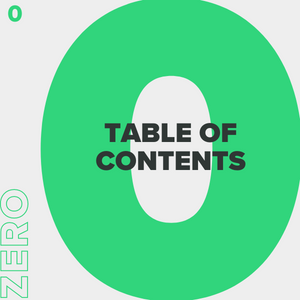
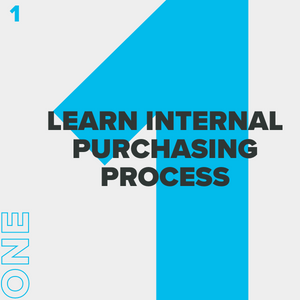
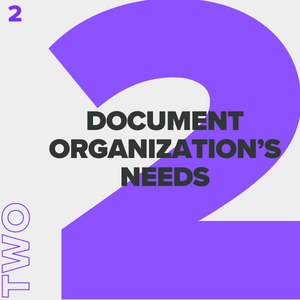
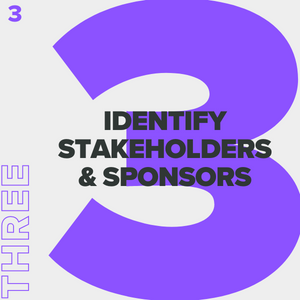


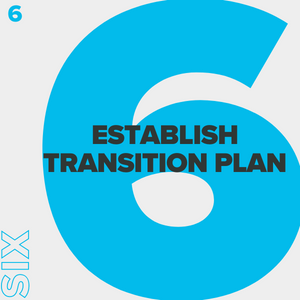
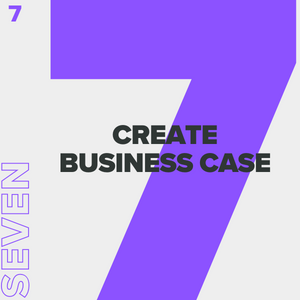

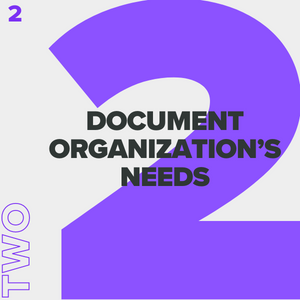 2. Document your organization’s needs
2. Document your organization’s needs 3. Identify internal stakeholders and sponsors
3. Identify internal stakeholders and sponsors 4. Evaluate vendors and build the case for the solution you want
4. Evaluate vendors and build the case for the solution you want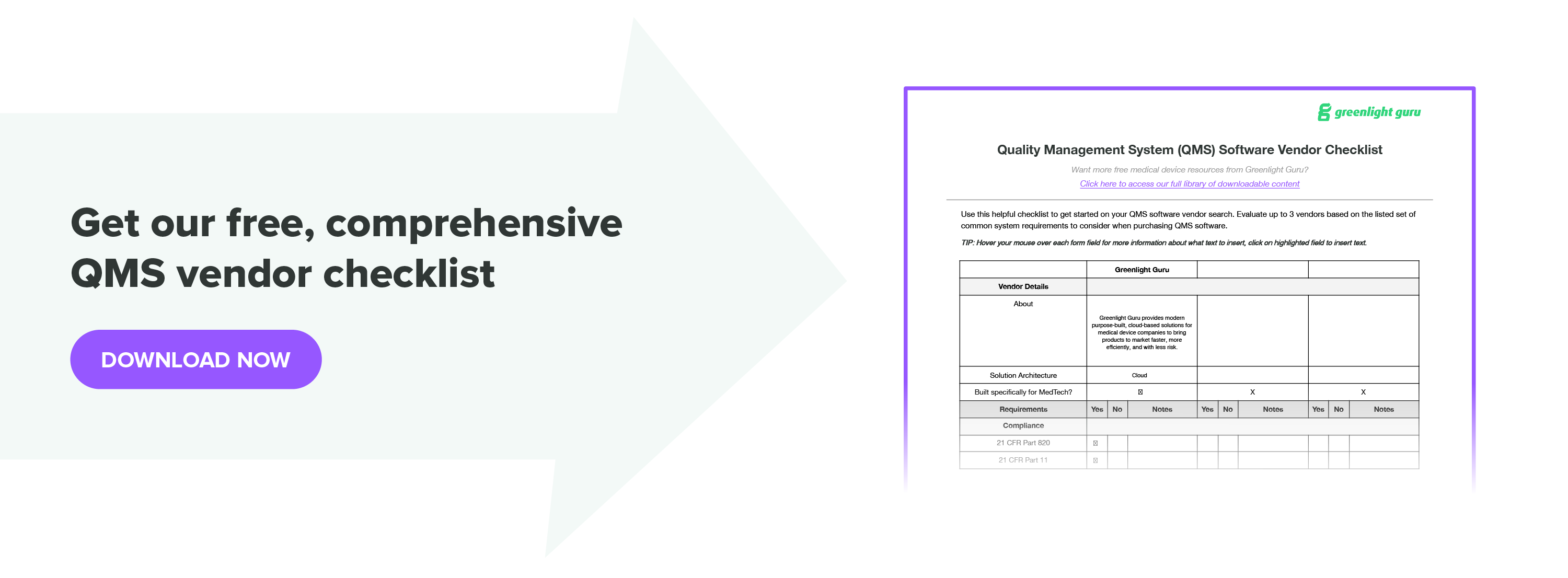
 5. Determine the ROI for this investment
5. Determine the ROI for this investment




%20eQMS%20Buyer%E2%80%99s%20Guide-%20Making%20the%20Business%20Case%20for%20a%20New%20QMS%20Solution.png?width=1700&name=(cover)%20eQMS%20Buyer%E2%80%99s%20Guide-%20Making%20the%20Business%20Case%20for%20a%20New%20QMS%20Solution.png)








